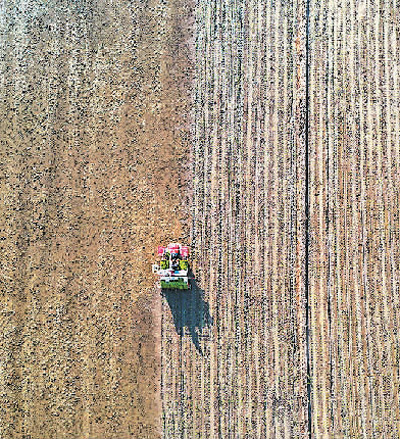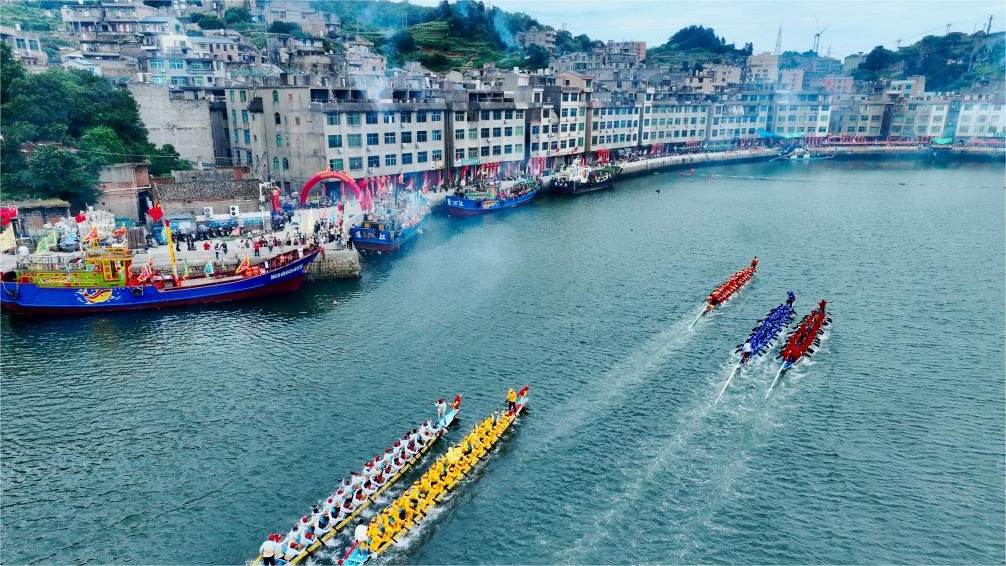NE China's Jilin promotes mixed rice-crayfish farming to boost farmers' incomes

A farmer operates an agricultural machine to transplant rice seedlings in a rice field of a planting farmers' cooperative in Yongji county, Jilin city, northeast China's Jilin Province. (Xinhua/Zhang Nan)
In northeast China, May marks the season for transplanting rice seedlings.
Wang Qiuju, an associate professor from Jilin Agricultural University, was checking on the growth of baby crayfish at a pond near rice fields in Nanwaizi village, Gongzhuling city, northeast China's Jilin Province.
"The baby crayfish are thriving and have reached the length of a little finger. Once the rice transplanting is completed, the baby crayfish will be released into the rice fields. They are expected to be harvested in July and August," said Wang, the chief expert at a "rice-fishing farming science and technology backyard" in Gongzhuling.
Farming crayfish or crabs in rice fields can be economically beneficial, but requires a significant level of technical expertise.
Wang explained that the challenge lies in the fact that crayfish and crabs do not adapt well to mechanized rice transplanting. Additionally, there is a lack of established standards regarding the appropriate stock density and quality of baby crayfish. As a result, it is difficult for farmers to achieve consistent income growth through the traditional mixed farming approach.
In 2018, Wang and his team arrived in the village with the aim of addressing agricultural "bottleneck" issues. They began focusing on developing techniques for cultivating crayfish and crabs in rice fields.
After years of experimentation, the team successfully developed a model for rice cultivation combined with crayfish and crab farming. Additionally, they devised a technique that significantly enhances the survival rate of baby crayfish in cold climates in northern China. This technique is not only highly standardized and practical but also compatible with mechanized rice transplanting and improves feed utilization.
"By adopting the new model, we have gained confidence in aquaculture and witnessed a significant increase in our incomes," said Zhao Chunyu, head of an aquaculture farmers' cooperative in Gongzhuling city.
In recent years, the cooperative has been able to earn on average an extra 800 yuan (about $110.41) per mu (1 mu equals 667 square meters) of land through aquaculture. This innovative approach has also led to better quality rice being produced.
"Previously, rice would sell for just over 4 yuan per kilogram, but now it can be sold for up to 16 yuan per kilogram," Zhao added.
Since 2018, the cooperative has experienced significant growth, expanding from having seven farming households and over 120 mu of land to having over 40 farming households and more than 1,100 mu of land. The innovative farming model has now been successfully implemented in 100,000 mu of rice fields across the province.
The "rice-fishing farming science and technology backyard," deeply rooted in the countryside, not only promotes technological innovation but also contributes to academic advancement. In the past five years, a total of 13 papers from teachers and students associated with this project have been included in the Science Citation Index (SCI).
Jilin Province currently boasts 105 nationally recognized "science and technology backyards," ranking first in the country. These backyards are a collaborative effort involving 14 universities and research institutes, covering a wide range of 48 industry categories, including planting, aquaculture, and agricultural engineering.
Photos
Related Stories
- Pic story: female operator aids villagers with combine harvester
- Farmers transplant rice seedlings in Suichuan, E China's Jiangxi
- Farmers plant potatoes in N China's Hebei
- Spring farming in full swing during Grain Rain
- Innovative farming fuels efficiency for 'new farmers' in E China's Jiangxi
- Farmers sow corn seeds in Inner Mongolia
- Smart farming blooms on Chengdu plain
Copyright © 2024 People's Daily Online. All Rights Reserved.









